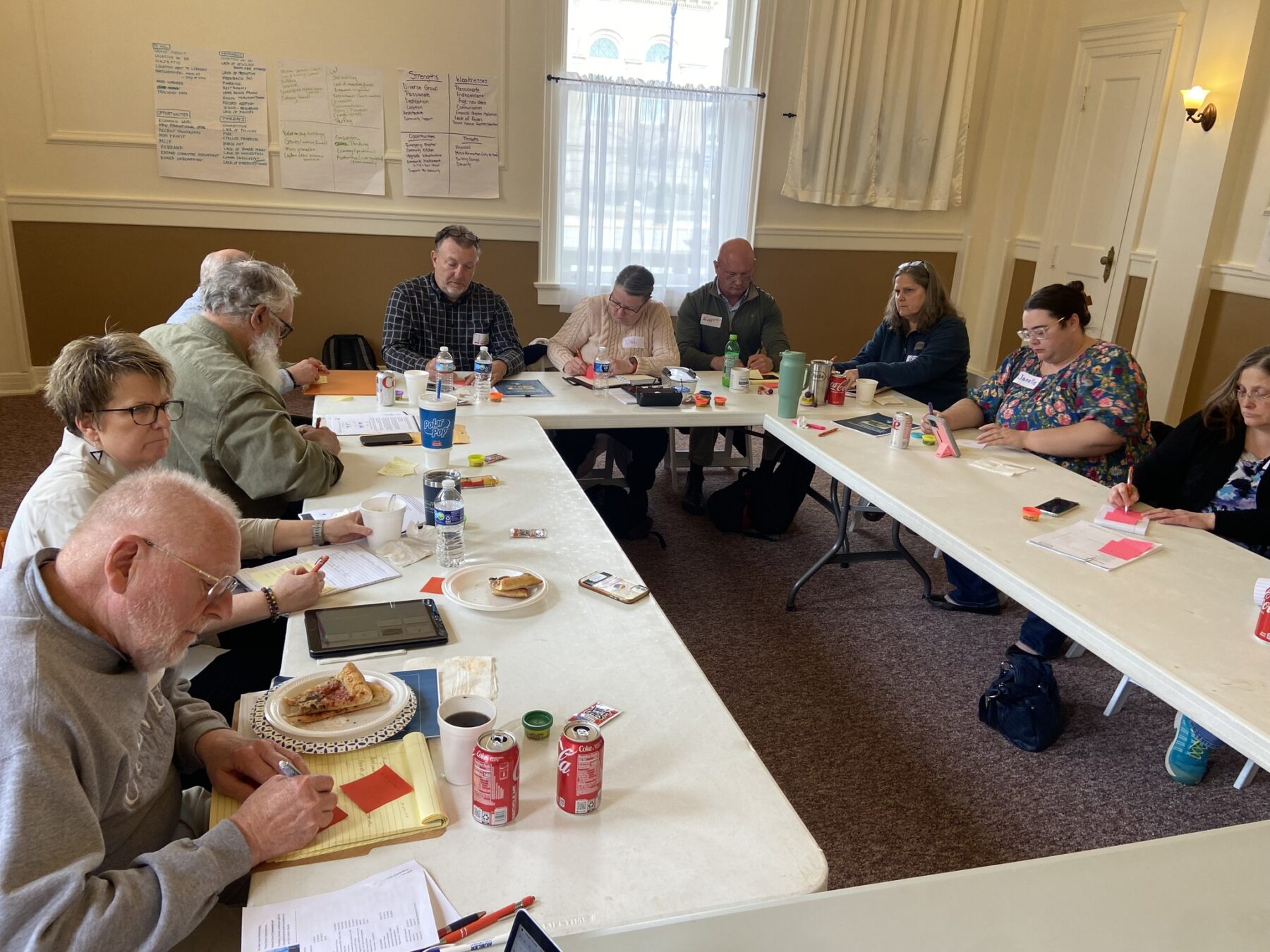Do you ever find yourself on a path with no direction? A strategic plan may be what you need to put you on the path to success. A strategic plan is essentially a road map for an organization to reach its goals and strategies to accomplish those goals. We help programs develop their strategic plans with our 4 step process, which you can read more about in a previous blog. This blog focuses on step one in the process: “Collaborate to Determine What We Need to Learn”.
![]()
We pride ourselves on step one, collaboration, to work with our clients and not for them. We work with clients to determine key questions we want to answer through the strategic planning process. We then work with clients to identify the appropriate stakeholders to inform the key questions and planning process. When we meet with our client during the kick-off meeting, we ask them a series of questions to help guide the second step in our strategic planning process:
- WHO do you want to solicit feedback from?
- What do you want to KNOW/ LEARN from them?
- What is the best METHOD to engage them (interview, survey, focus group)?
By engaging diverse stakeholders in the planning process, we not only help to increase buy-in and ownership from those stakeholders but also solicit rich feedback to inform the final plan. The key stakeholders will vary depending on your organization, but typically they consist of stakeholders within and outside of the organization.
Key Stakeholders within an Organization |
External Stakeholders |
|
|
|
|
|
|
|
Once the key stakeholders are identified, how do we gather their feedback to inform the planning process? We like to use a variety of methods to solicit stakeholder feedback. We ultimately select the tool based on appropriateness for the audience, timeline, and budget. Our go-to four tools for collecting stakeholder feedback are the following:
1. Surveys
Surveys are a common method to use, but to get great feedback from surveys you need to hone your approach of how you administer it and the types of questions asked.
- Be mindful of the question style and the reading level based on the audience and their ease of taking the survey. Survey participants can respond to a survey more efficiently using multiple-choice style questions versus several open-ended questions. This also supports analysis later! In addition, consider the reading level of the audience. For example, if you plan to survey youth, assess the questions’ reading level to make sure it is developmentally appropriate.
- Be aware of survey fatigue. People are getting surveys from many sources. Include a clear ask, introduction, and ask questions most pertinent to inform the strategic planning process.
Think about the best method to distribute the survey to reach the intended audience–email, public flyers, phone survey, paper, etc. Who is best suited to distribute the surveys? This could be the primary organization, a third party (e.g. us as the consultant), or other community partners (e.g.economic development group, chamber of commerce, etc.).
2. Focus Groups
If you want to get more in-depth feedback beyond basic survey questions, a focus group or listening session may be the appropriate tool.
- Create guided open-ended questions that prompt conversation during the focus group.
- Consider the best way and time to convene the stakeholder group. Identify if the stakeholder group has a regular meeting time when you could be added to the agenda to ask some questions and gather their feedback. We have done focus groups at conferences, community meetings, parent councils, and ahead of retreats, just to name a few.
- Focus groups can be done in combination with surveys. We’ve done focus groups first to ask broad questions to a small group that will then inform a survey that goes out to the large group. We’ve also done focus groups after a survey to go deeper into some of the questions asked in a survey.
3. Interviews
There is often a community member or business leader with expertise in the area of a strategic plan.
- If they are not already a part of the planning process, invite them for an interview to gather feedback and information related to the strategic plan topic.
- The stakeholders for individual interviews are typically people who have a deep history, knowledge, experience, or stake in the organization.
- Similar to the focus group, outline open-ended questions, but leave room for unguided conversation as well depending on what they want to share.
4. Invitation to Planning Meetings
Some stakeholders are key decision-makers and influencers in the community.
- Bringing them to the table throughout the process will help keep them informed to know how to better share the message and goals of the strategic plan.
- They will also be able to bring a different perspective from those within the organization, which helps avoid groupthink.
- You could invite these stakeholders to one of your planning retreats to unpack all of the data and feedback collected and assist with identifying the key goals and strategies.
Review more tips about engaging diverse stakeholders in another blog. Once the key stakeholders are identified and tools have been distributed for feedback, move on to step two, “analyze the organization and landscape”. Follow our blog posts to find out effective methods for assessing your organization and community to inform your strategic plan. Contact us today to learn more about our strategic planning process and how we can work together to identify the appropriate key stakeholders and tools to inform the planning process.

